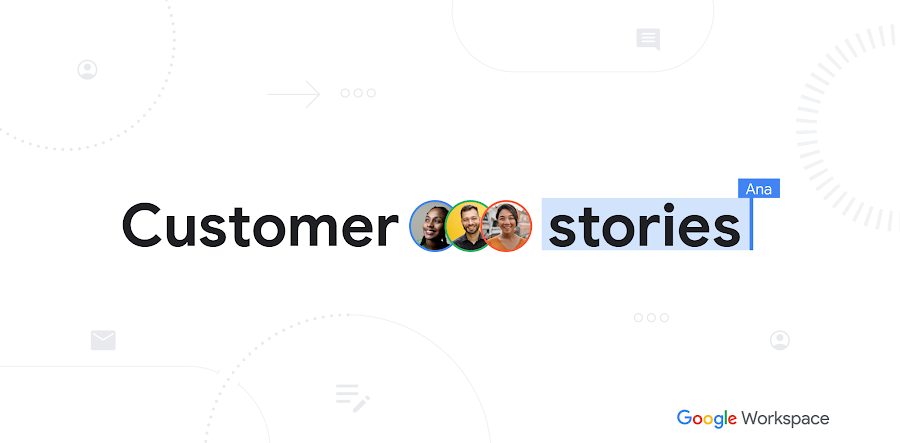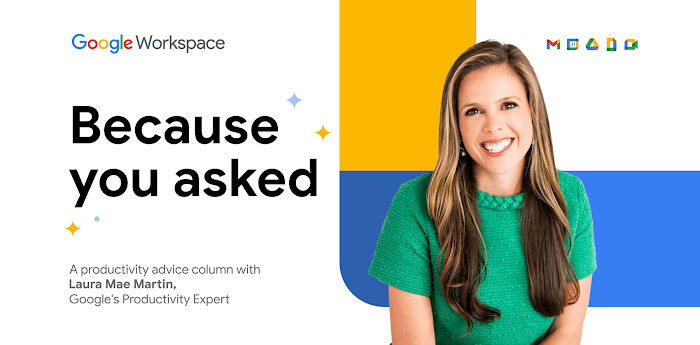Working together while apart: How we helped a leading telecom kick off its digital transformation amid COVID-19
Sarah Masotti
Digital Transformation Lead, Google Cloud
Learn how Google Cloud Consulting Services helped build a culture of innovation as one customer embarked on a digital transformation journey amid COVID-19.
Try Google Workspace at No Cost
Get a business email, all the storage you need, video conferencing, and more.
SIGN UPFrom market volatility to business uncertainty, the impact of COVID-19 on enterprises has been felt far and wide. Almost overnight, multinational organizations needed to shift thousands of employees to remote work, while juggling uncertainty, new resource and funding realities, and on top of that, health concerns, and childcare priorities.
Inside the Google Cloud Consulting Services team, we felt these unique challenges particularly strongly. Our role is to help strategic customers solve their business objectives with Google Cloud. For these customers, we mobilize dedicated program teams that include technical leads, software developers, cloud engineers, digital transformation consultants, cloud consultants, change management and culture consultants, operating model specialists, and executive sponsors, to name a few. We work side by side with customers on their most complex challenges, and building the familiarity and trust that working together in person affords is a necessary part of our work.
All this was thrown for a loop by COVID-19. We had just begun an engagement with a global company at the time stay-at-home mandates were put into place. This customer had audacious goals—unlock value from their data and use it as a strategic asset in a shift to a more data-driven, experimental, and innovative culture. This was an inspiring goal for both them and our team, but with the business uncertainty and impact of COVID-19, success was far from certain.
Typically, at the beginning of a collaboration like this, we meet in person for a high energy, face-to-face kickoff to identify the vision, success metrics, key outputs and timelines, and start to form meaningful connections and team cohesion. But in this case, we didn’t have the luxury of meeting our Google Cloud team, or our customer, or our Google Cloud partner (who works with us to support the engagement) in person. In fact, most of us still haven’t met in person—and we likely won’t have any physical contact with our closest teammates for the foreseeable future.
So, how do you engage and excite a new team of people from three companies who have never met before to drive radical organizational transformation in the midst of a global crisis? We did it by relying on the right technology and setting the right culture.
Relying on the right technology
We began by kicking off a 3-hr virtual workshop using Google Meet. A week prior, we sent a checklist to ensure all 70 attendees could access the Meet and scheduled drop-in ‘Tech Checks’ for people to troubleshoot the new tech. At the beginning of each virtual workshop we provided a simple Meet demo which helped bring everyone up to speed and facilitated an open and inclusive environment. For example, we showed them:
How to turn on captions, which uses Google AI to provide real-time subtitles. If attendees had poor bandwidth and the video lagged, they could catch up on the conversation by reading the captions.
How to customize layout options and how to toggle video/sound, encouraging videos ‘on’ for body language communication.
How to use Chat within Meet to instantly share feedback or ask questions. For example, we asked participants to ‘chat’ their favorite self-isolation snack. With this simple ice breaker, all 70 people were able to test out the technology and actively participate at the start of the session (raising their likelihood to actively participate again in the session).
Setting the right culture
The right culture is an essential ingredient for successful change, so at the beginning of our first virtual workshop, we established joint values to govern how we would work together. To do this in a fair and inclusive manner, we crowd-sourced input from the 70 workshop attendees—people simply had to scan a QR code on their phones, and enter their ideas into a Google form. Instantly, we could view everyone’s input in a Google sheet. Using the ‘Find and replace’ function, we identified commonly used words, and synthesized all inputs into 10 Golden Rules that set the environment and culture we collectively wanted to live. We did all of this ‘real time’, during the meeting so every participant could see their contribution.
For example, common words were ‘open’, ‘openness,’ ‘transparency,’ and so we set the joint team Golden Rule to ‘strive for transparency across teams, and companies’. After the workshop, this Golden Rule drove further action, as teams opened permissions and sharing settings on files, so that by default, all program files are open and transparent across teams and companies (with exceptions for confidential files). To take this further, at the beginning of each technical or program workshop, we included a 1-slider of our 10 collective Golden Rules. At the end of each workshop, we would remind ourselves again of the rules and pose the questions : ‘How did we do today? Did we stay true to our Golden Rules, and our ideal new ways of working?’ This approach is based on Nudge Theory and the science behind subtly nudging people to change their behaviour, and we were pleased to promptly see a behaviour change and the establishment of a new team culture.
We quickly discovered that establishing team cohesion upfront was even more essential and heightened by the fact that everyone is working remotely.
Over time, we continued to experiment with other techniques to enhance the collaborative experience. For example:
Leading with values
To simulate the informal connections that new teams build in face to face environments, everyone shared a photo of themselves, their preferred working times (accommodating childcare), and contact channels. This fostered a psychologically safe environment, and began to build a sense of community.
We instituted Live Q&A and Chat for asking questions without disrupting the workshop. (We also included an ‘anonymous’ option to help with asking sensitive questions.)
When world events escalated and anti-racism protests emerged, we facilitated a Well-Being Check In to build empathy and support one another, deepening our relationships and trust.
Using principles from Google’s Site Reliability Engineering, we ran blameless postmortems and retrospectives to identify areas for improvement. A feedback loop was essential to test, iterate and improve, especially in the current uncertain and ever-changing environment.
Creating engaging forums
We redesigned our typical workshops with remote work in mind. For example, workshops that would normally take place as full-day sessions on site were adapted to include detailed pre-work and objective-driven mini workshops (i.e. 2-hours each morning) to avoid video fatigue and make live Meet time most effective.
We used Jamboards as interactive whiteboards for technical design sessions and co-creation.
We used music in slides presentations, since research suggests music stimulates the brain and helps people remember content covered.
Executives recorded videos of themselves, shared widely to cascade communications and generate excitement.
We scheduled regular office hours via drop-in Meet sessions for people who didn’t feel comfortable asking questions in wider workshops. This fostered openness and psychological safety (the key driver for high-performing teams).
We encouraged physical exercise (push ups, squats, and split jumps) to increase energy and focus (and get a laugh).
Within weeks, we demonstrated that virtual engagements are not only possible, they’re an opportunity to innovate and improve our entire approach. As we continue to evolve this approach, we estimate that post-pandemic, more customers will be open to remote services even if we have the option to work in person. This could mean a significant productivity boost and cost savings due to reduced travel and expenses, and we estimate that number to grow. On top of that, virtual delivery means we can bring the best talent and experience to our customers regardless of where they are in the world.
While the world continues to work from home, we have a unique opportunity to continue improving how to support teams remotely. Here are a few things we’re experimenting with right now:
Emojis. Emojis are widely understood and used by more than 90% of the world’s online population. We encourage participants to use emojis in Meet to swiftly and efficiently share reactions to ideas or discussion.
A data driven approach to talking/listening time in live meetings to build better meeting habits and strive for equal contribution. A little emoji reacts to how much you listen or talk during a call, and provides you with percentages of talking vs. listening time, alongside real-time personalized challenges to encourage balanced listening and contributing, regardless of seniority.
Small nudges, called ‘Knock-knocks’, reminiscent of knocking politely on a meeting room door. This helps remind people when meetings are ending soon or overrunning, nudging people to wrap up the call and focus on next steps. And in 1-click, you can let others know if you are running late, improving meeting efficiency.
We are excited to continue to learn and iterate as we go, and we can’t wait to help more customers as they embark on their transformation journeys, no matter where they are.
Learn more about our Consulting Services.
Acknowledgements
Thank you to the Googlers who made this possible, including Dan Norcott, Tanu Gupta, James Cowe, Ada Tagoe (Ng), Moriah Baxevane-Connell, Rachael Deacon-smith, Olly Richards, Bjorn De Bakker, Stavros Denaxas, Jonathan Kane, Derick Silveira, Sarah Masotti


